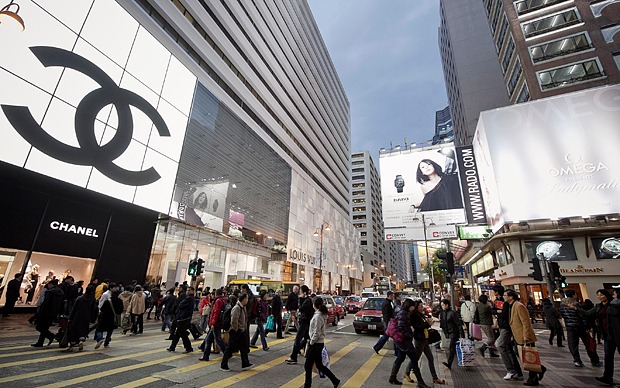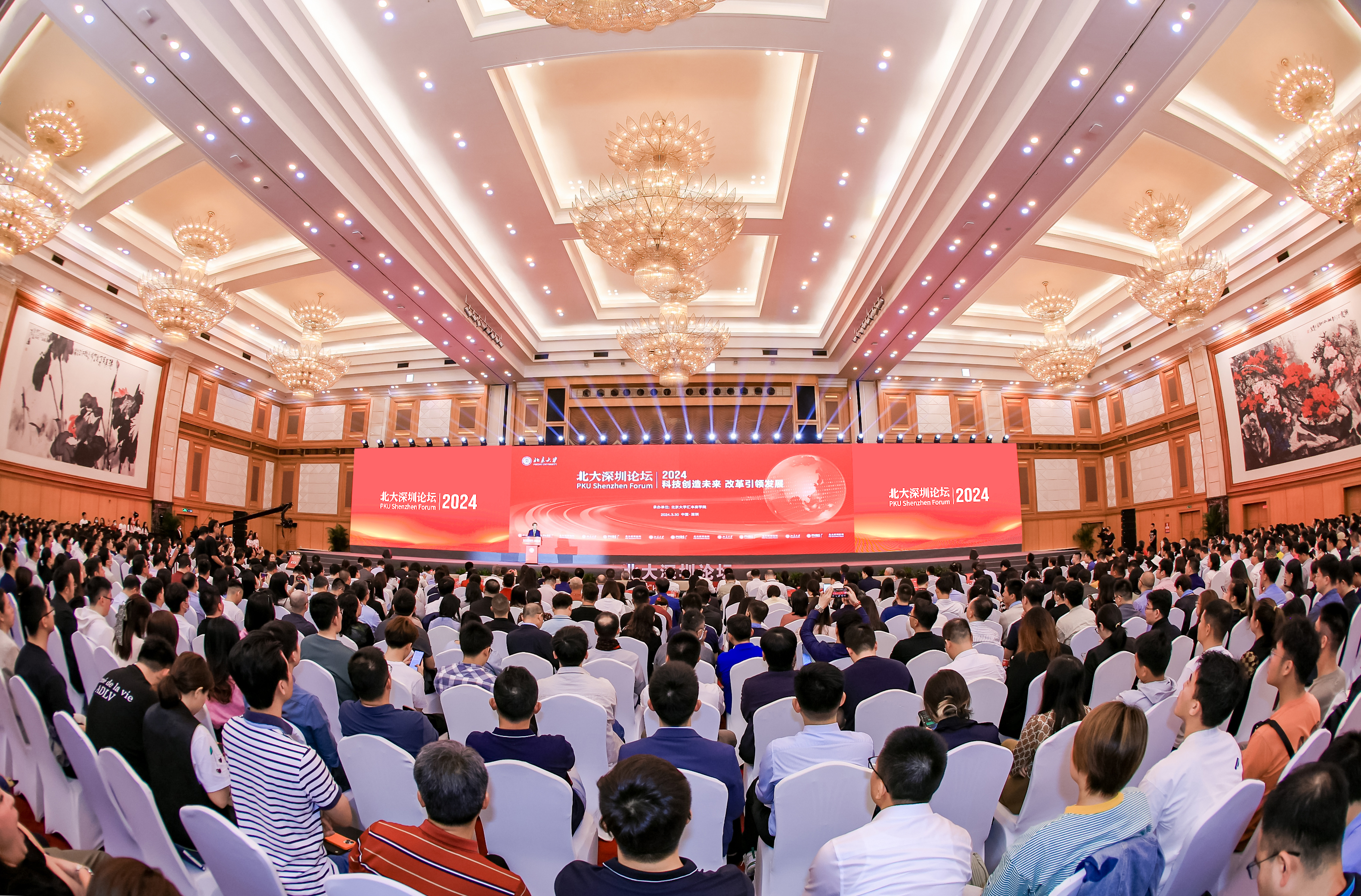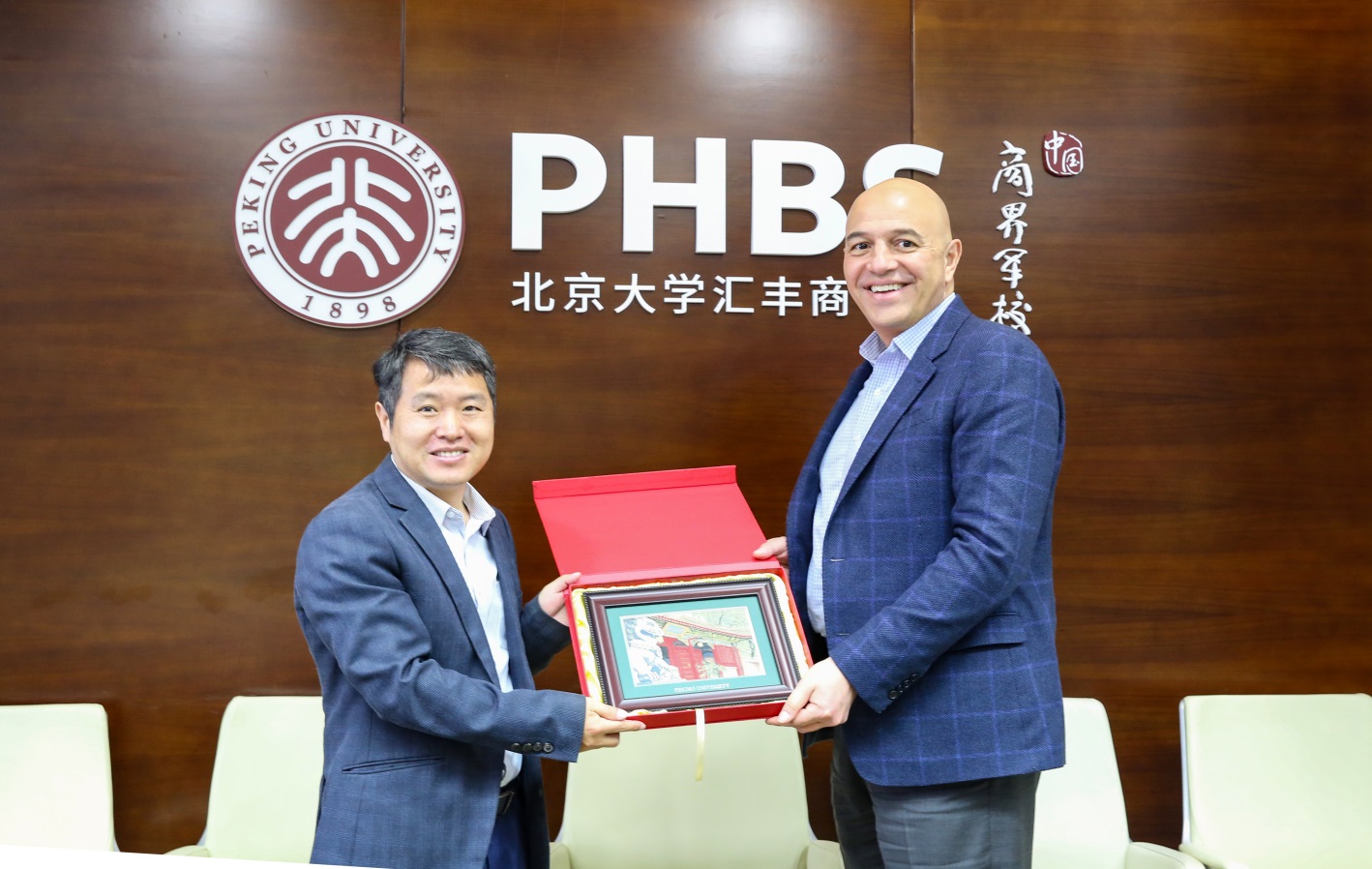By Annie Jin, The PHBS Media Office
 In October 2015, Credit Suisse reported that, for the first time, the size of China’s middle class had exceeded that of America’s middle class, 109 million to 92 million.As incomes rise, so too does demand for durable and luxury goods, vehicles, air travel, energy and more.
In October 2015, Credit Suisse reported that, for the first time, the size of China’s middle class had exceeded that of America’s middle class, 109 million to 92 million.As incomes rise, so too does demand for durable and luxury goods, vehicles, air travel, energy and more.
As structural economic declines become inevitable, China is entering into the “new normal,” a trend different from the high-speed growth pattern exhibited in the past. The fears of China’s further slowdown have made its expanding middle class seek ways to prevent their wealth from shrinking away. Moving money abroad and trading foreign currency emerge as two common choices for them to fight stumbling stock markets and renminbi depreciation. A recent survey by the
Financial Times showed that 45 percent of Chinese middle-earners wanted to trade at least 10 percent of their savings for foreign currency, while another 29 percent had already done so.
Obviously, the capital flight is a sign of how the Chinese have become more insecure about their future. News stories like “The conservativeness and dilemmas of the middle class,” (the Financial Times Chinese site), “Opium for the middle class —fleeting away from China’s super metropolises,” (Tencent.com), and comments focusing on “Will the middle class become the new poor?”, swamped social media and demonstrated the sense of insecurity. Economic insecurity also adds to the standing list of issues, such as environmental pollution, food safety and soaring housing prices. Any of these could be the last straw for the “squeezed middle,” a segment of the population who have middle-income jobs and are most affected by inflation and tax increases. How can we understand the “new normal,” and how can China’s “squeezed middle” find their way out in the new era of social and economic changes?
These intriguing issues have become the world’s spotlight as China’s middle class is providing a great impetus to the country’s rise on the international arena. It is believed that the expanding middle class will drive up the world’s economy by their enormous consumption power. During the 2016 Conference of the Chinese Economists Society held at the Peking University HSBC Business School (PHBS),
Dwight Perkins, professor emeritus of Harvard University and former director of the Harvard University Asia Center gave a plenary report on China’s economic prospect. He has authored or edited 20 books and numerous articles on economic history and economic development of Asia. As one of the most renowned experts on developing countries, he devoted himself to studying China over the past few decades, witnessing the nation’s minute changes.
In his interview with PHBS school media after his presentation, Perkins shared his viewpoints on China’s recent slowdown and insights about its middle class’s status quo and future development.

Dwight Perkins (right), professor emeritus of Harvard University , former director of the Harvard University Asia Center and associate director of the East Asian (now Fairbank) Research Center.
Question: You once mentioned that the model of China’s past rapid growth, in essence, involved four basic components: Soviet system dissolution, reform and opening-up, urbanization, and massive infrastructure investment. How will these components change and interact with each other in the near future?
Perkins: Most of the productivity in the earlier years was unleashed by deconstructing the very ineffective soviet-type system, adopting the market economy. Urbanization created a big boom in per capita output when shifting the rural labor force to the urban industrial sector. As professor Cai Fang said, that kind of labor surplus is gone, and that source of productivity would be sluggish. China’s biggest unusual growth is that it has very large investments to drive up the economy, and it’s not healthy at all in the long run. The reason behind the massive investment is that China’s household consumption is too low.
China adopted the planned economy of the Soviet system before its reform and opening-up, so it had a bleak consumption market and backward transportation and housing situation back then. In the early 1980s, the per capita housing area was only 8 square meters, not spacious enough for a family of three people. After its reform and opening-up, China heavily invested in the housing market and transportation, creating noticeable economic growth. However, China now can no longer maintain high growth through infrastructure construction, such as building highways, high-speed railways and airports. In addition, its housing market is reaching the limits with little potential for further growth. Since it’s hard to boost household consumption, the way to drive up the economy is to invest more in other sectors with great growth potential, such as the high-tech industry and clean energy.
Question: Today, the once-dynamic Japanese and South Korean economies are sluggish and even China shows signs of losing steam. Do you think this is a regional phenom-enon or typical of all economies at this stage of development? Are there any overlap-ping reasons behind the slowdown of those nations?
Perkins: The very high growth rate of 9% or 10%, which is the so-called catching-up growth rate, has long come into an end before a developing country fully catches up the per capita growth rate of industrial countries. The stagnation in Japan in the last 20 or 30 years was abnormal due to the bubbles in the capital market, especially in real estate. However, the current slowdown in China is actually normal, but there are some structural threats that could bring it down further. South Korea never got into such a bubble situation that emerged in Japan. What’s beginning to happen in China, and has already happened in Japan, is the rapid ageing of the population. When you began to have a very large retirement population, it would be a burden for the economy. Japan is very far into that process, and the U.S. on the contrast is not, thanks to immigration. So there are abnormal slowdowns like Japan’s case, and normal slowdowns like Chi-na.
Question: As the components that drive up China’s economy changed and economic slowdown become inevitable, what is China’s economic prospect, a “hard landing” or secular stagnation?
Perkins: First, we need to define “hard landing.” Here, I refer it to noticeable economic slowdown, even zero or negative growth. Overall, the four components that contributed to China’s marvellous growth changed profoundly, which is why China should adapt to new trends in this economic transition period. But now there is no “hard landing” and stagnation scenario that China will fall into.
Nowadays, social media frequently exposes China’s economic problems, such as heavily-indebted companies, a chaotic financial market and banks’ high bad debt rate. If all those problems emerged in the U.S., it would probably fall into a great recession because the country has a compressive framework that limits government’s intervention and presence in market regulation. That is not the case in China. For example, the bad debt rate in China’s banking sector has amounted to 40%, and its government often chooses to print more money to bail out those banks. Under such circumstances, government's financial support to companies and banks with bad performance will lead to economic slowdown in the long run. So, I think the implementation of China’s reform, especially reform for state-owned companies is not strong enough. Additionally, the increased investment in infrastructure and transitional industries will also cause drops in marginal capital returns. If the vicious circle continues, the risk for China’s stagnation will deepen, but its economy will not get out of control under the government intervention.
Question: One result of China’s economic growth is the expansion of its middle class. Since the middle class is often regarded as the cornerstone of a country’s development, what kind of role they will play in China’s political and economic transition to sustain its rise to a modern high income society?
Perkins: Although China’s middle class is expanding, it is not a middle-class country. Consider whether people think themselves middle class: 80% of the population in South Korea thinks so, but the ratio in China is much lower. Middle class means better education, higher income and better health, and demands for different kinds of products. China used to dominate by a large rural majority, but now its population makeup has undergone profound changes. As a much more educated population begins to dominate, there are a lot of people who will have ideas about how they think the system should work and will not just take the government directions. So, the implication is potentially more political than economic. The growing middle class will then have huge impact on China’s political and economic transition. What will be that future transition? I have no idea. It could be much more liberal and open. It is a dif-ferent case compared to running a country with 80% peasants.
Question: However, China’s middle class confronts loads of stress: high inflation, soaring housing prices and environment contamination, etc. So, when the outside world holds high expectations for them, they would rather maintain the status quo and secure their fragile future. What do you think about this phenomenon and how can the “squeezed middle” find their way out?
Perkins: The stock market in China is still at the early stage of development. It’s more like gambling than investing. Eventually the government will get some control on insider trading and various games that brokers played to make money, but it’s hard to do so. Since the stock market is not a very reliable place to invest, more liquid capital is invested outside China. When a country is developing, it’s normal that it has banking system, housing and wealth management products, some of which are reliable, some of which are totally unreliable. We still have problems in our stock market where other manipulations are still happening. Middle class people are not billionaires, and they have to spend their money carefully. When I started to study China, the average income per household was a few hundred dollars a year, but now a few thousand dollars a year. Chinese people are much richer, so they have a lot more options than they once had. But, they still have things to worry about financially. The problem is part of life.
Most of the time, China’s middle class has been benefiting from the system and has become part of it. And the system is reasonably successful, bringing up the standard of living at a rapid rate. In that context, the great majority of people will remain supportive, though not always. Take South Korea as an example. People wanted more control over their life lives and then pushed forward its democratic progress back in 1990s. Now, one of the real problems in China is that government has bought the land from framers at a very low price and sold at a very high price. That will bring potential riots in the countryside. The Tianjin harbor explosion is just an example of the lurking problem facing the middle class in the urban area, but it will not undermine the whole political and social system. When more people feel they are the victims of the system, and when even the high-ranking officials feel fed up with it, there will be some major changes to the system.
Question: In your recent book East Asian Development: Foundations and Strategies, you analyze income distribution to uncover why societies have ended up in very dif-ferent places, with Japan, for example, maintaining a modest gap between rich and poor while China has become one of Asia’s most unequal economies. So, how can we deal with the unequal economy, and what does it take to bridge the widening gap?
Perkins: It’s not easy to reduce the difference. A part of the phenomena is driven by market forces. When it is corrupted government officials getting rich, the answer is get rid of the corruption. If it’s Jack Ma, the founder of Alibaba, who has a very suc-cessful business, that’s not the problem. In any society, you want to have upward mo-bility. People who have energy, skills and so on should get more education and be able to rise. You want equal opportunity to achieve equality. That is equality of oppor-tunity, not equality of result. Even if you have equality of opportunity, there may be gaps among results. Governments have to do something about it. Income taxes can be more aggressive, minimum wages and others are also options. China is taking some of the steps to ensure a better the living standard of the people at the bottom.
















